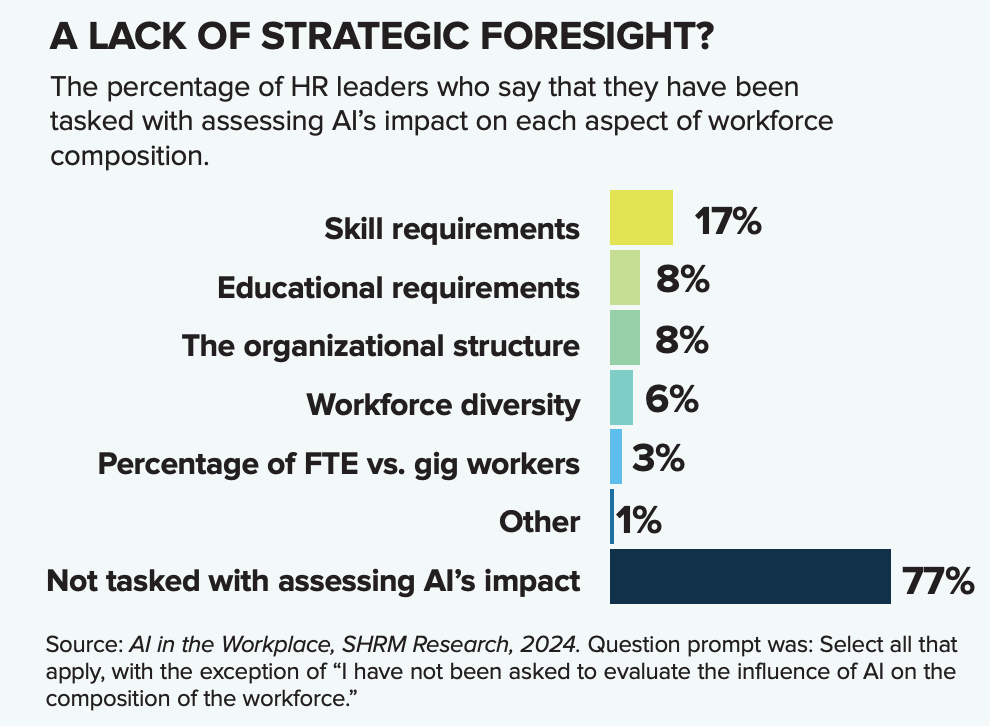Research + Insights: Navigating AI Now and in the Future: Perspectives from HR Leaders and Employees
To gain insights into AI in the workplace, SHRM Research surveyed 1,993 U.S. workers and 1,220 HR leaders in January and February 2024. The results reveal a rapidly changing business landscape as organizations embrace the power of AI, either now or with plans to adopt the technology within the next year or two. Notably, HR is emerging as a key area that is ripe for AI investment and opportunity. While AI holds great potential, human intelligence and collaboration remain critical to its success. To successfully navigate this future, individuals will need to cultivate a diverse skill set, with HR taking center stage in upskilling and reskilling efforts.
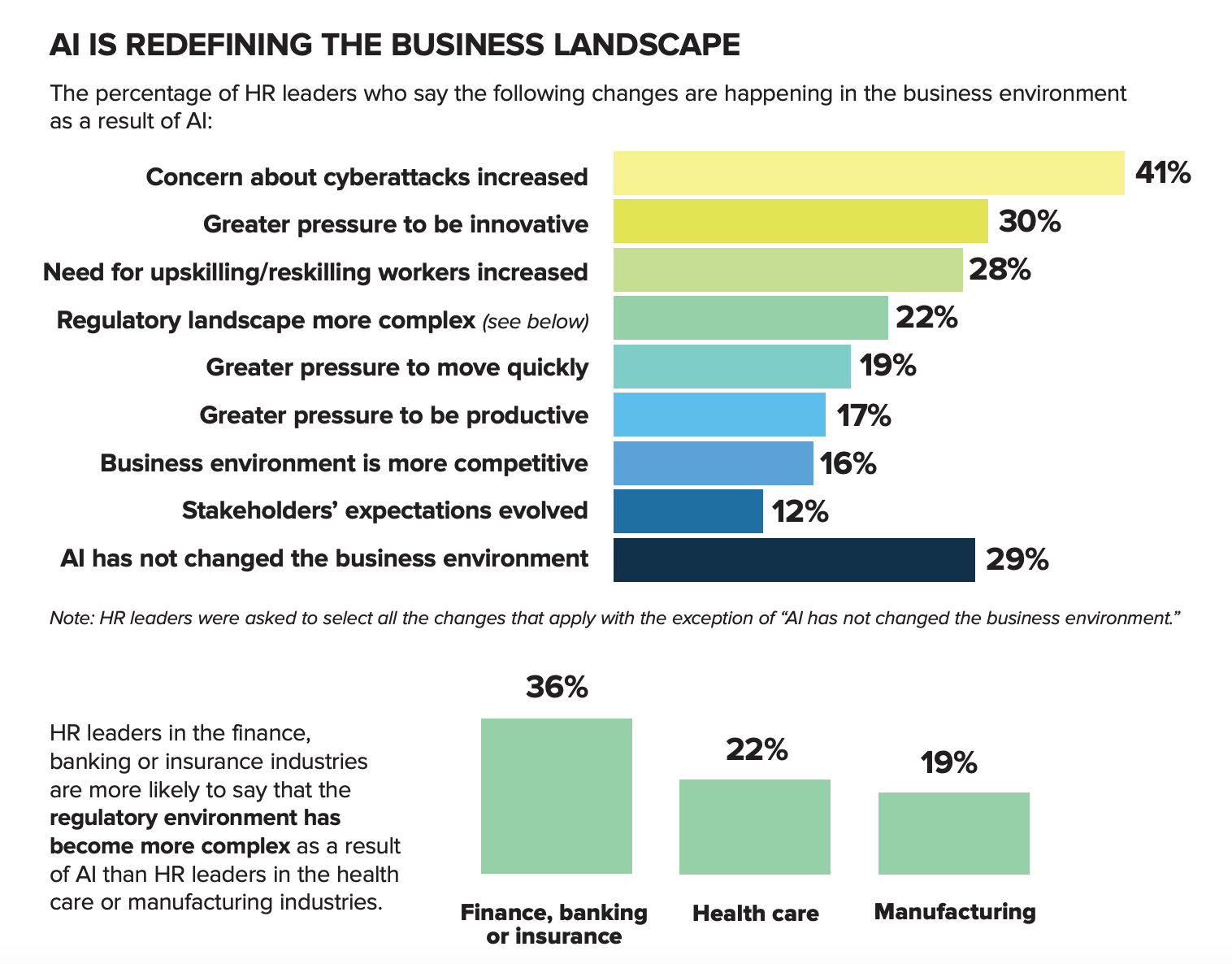
Note: HR leaders were asked to select all the changes that apply with the exception of “AI has not changed the business environment.”
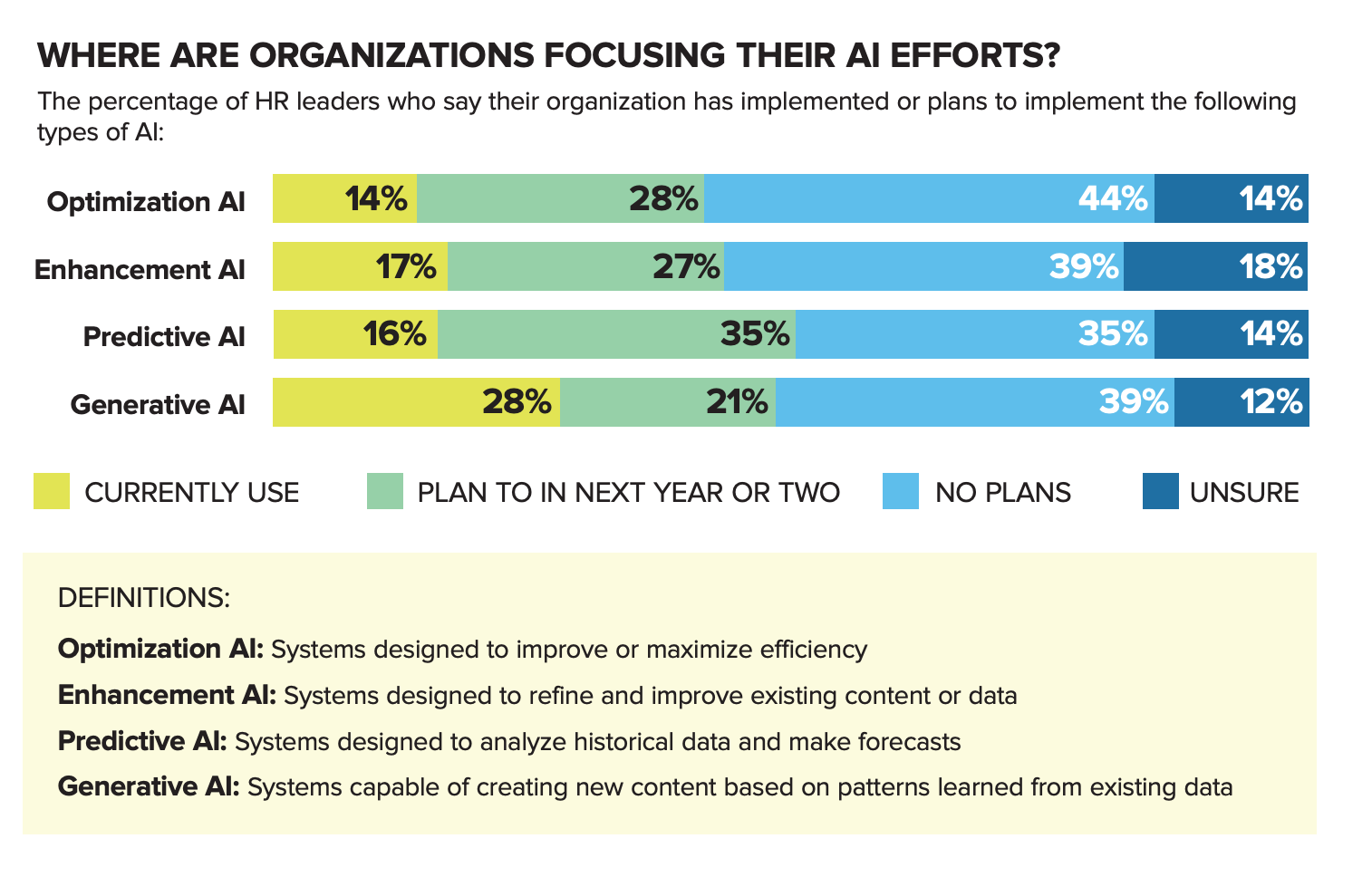
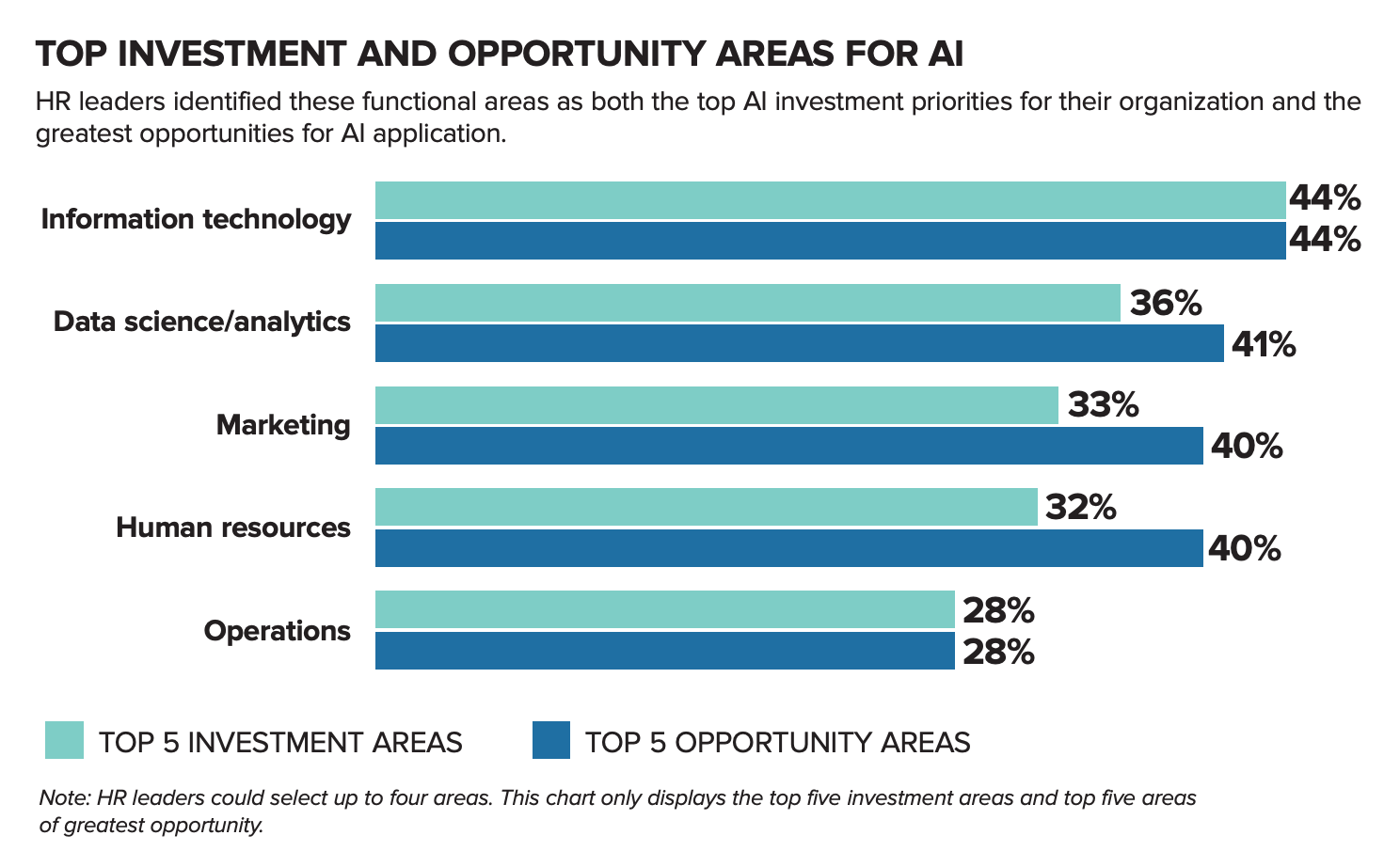
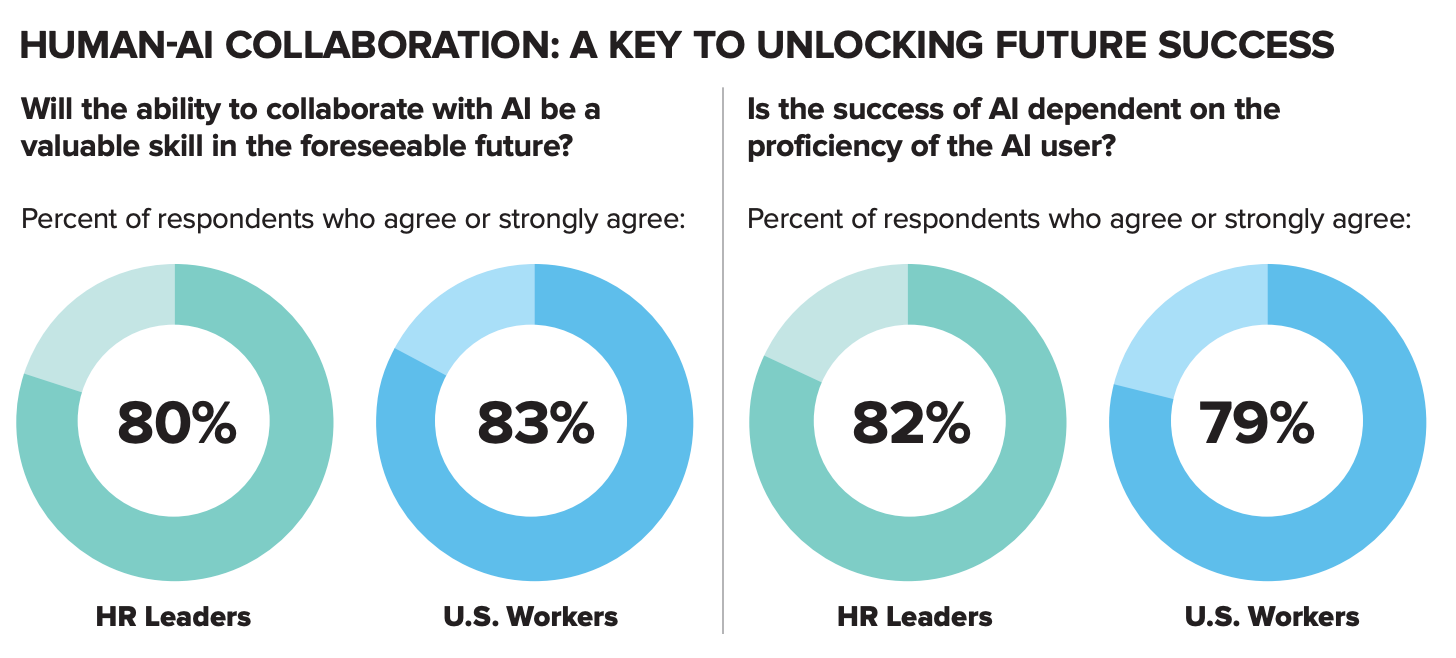
.
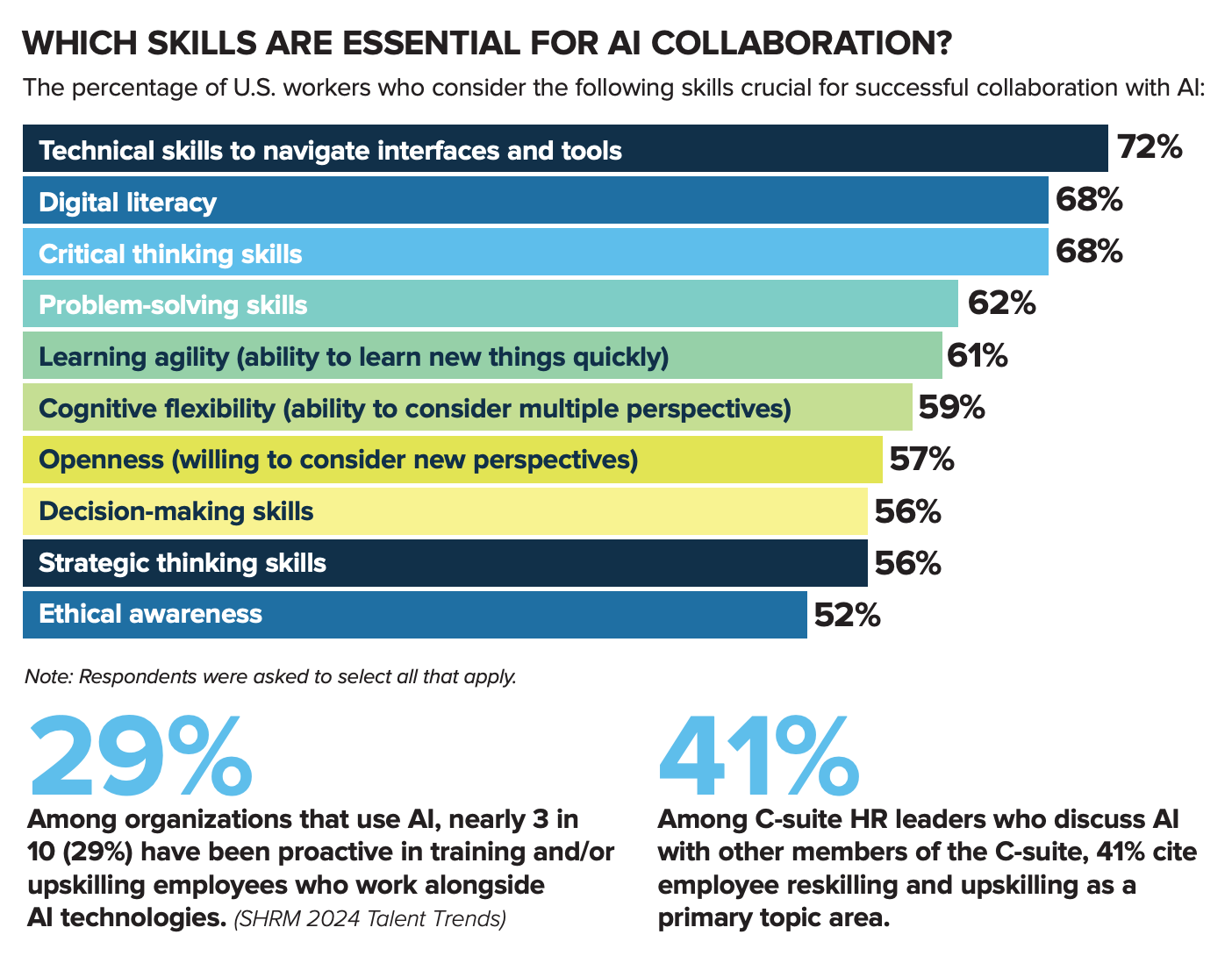
MESSAGE FROM THE RESEARCHERS
Upskilling and Reskilling for the AI-Driven Future
By Ragan Decker, Ph.D.
The rise of artificial intelligence in the workplace demands a reimagining of the skill sets essential for employees. Recent SHRM research underscores this point, revealing that 83 percent of HR leaders believe that upskilling will be essential for workers to remain in a job market shaped by AI.
This sentiment aligns with the prevailing understanding that AI is more likely to reshape existing jobs than entirely replace them, as affirmed by 58 percent of HR leaders (with only 16 percent of HR leaders in disagreement).
The ability to collaborate with AI will likely be critical in the future, as 88 percent of HR leaders and 86 percent of U.S. workers believe that AI needs humans for optimal functionality. What skills will be needed for effective human-machine collaboration in the future? U.S. workers say the most important competencies will be technical skills for navigating interfaces and tools (72 percent), digital literacy (68 percent), and critical thinking skills (68 percent).
However, teaching these skills presents some challenges. When HR leaders were asked why their organization hadn’t implemented various types of AI, lack of knowledge and skills among their workforce was a common theme. This highlights a critical skills gap that needs to be addressed for widespread AI adoption to happen.
Despite this skills gap, the implementation of AI training and upskilling programs remains limited. Among organizations utilizing AI, only 29 percent have taken proactive measures to train and upskill employees working alongside AI technologies (Talent Trends, SHRM Research, 2024).
Furthermore, the research highlights a lack of strategic foresight among many organizations. More than three-quarters of HR leaders have not yet been tasked with evaluating the influence of AI on the composition of the workforce (77 percent, see below), and only 17 percent have been asked to examine the impact of AI on skill requirements. This lack of proactive planning hinders an organization’s ability to adapt and thrive in the AI-driven future.
3 Smart Steps for HR
To bridge this gap and prepare for the future, organizations must adopt a proactive approach to workforce planning and development. SHRM Research recommends that HR leaders take the following steps:
- Play an active role, often taking the lead, in planning for the AI-driven future, including evaluating the impact of AI on skill requirements, educational requirements, the organizational structure and workforce composition overall.
- Foster a culture of continuous learning by encouraging employees to embrace lifelong learning and skill development.
- Invest in comprehensive upskilling and reskilling programs tailored to the specific needs of the workforce.
By taking these steps, organizations can ensure their workforce is well equipped to thrive alongside AI, unlocking its potential for greater efficiency, productivity and innovation in the years to come.
Ragan Decker, Ph.D., Manager EN/ES Research, SHRM
